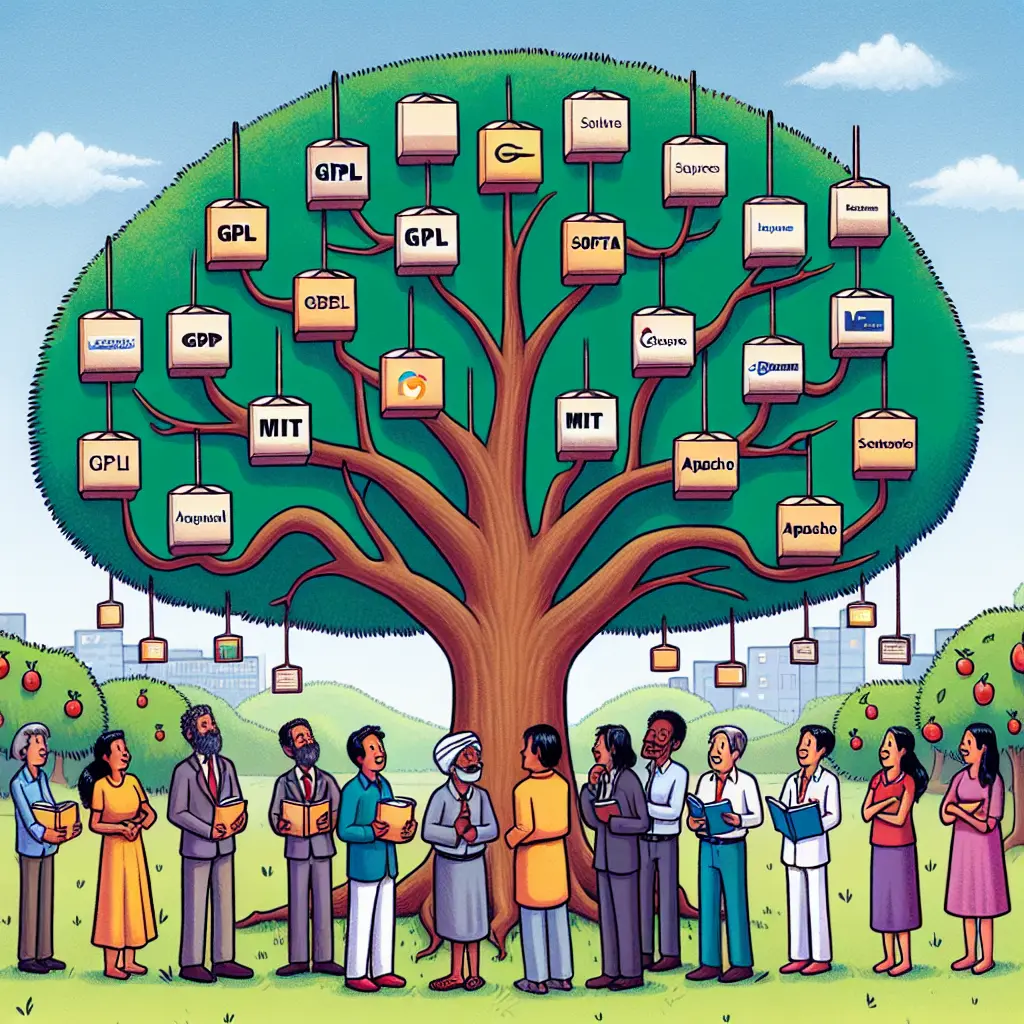In the vibrant realm of technology, open source software has emerged as a cornerstone of innovation and collaboration. From shaping the future of tech to empowering developers across the globe, open source projects continue to redefine how we create and interact with software. However, understanding the intricacies of open source software licensing is crucial for anyone involved in these projects.
The myriad open source license types, from permissive licenses like the MIT and BSD to the more protective GPL license, offer distinct approaches to usage, modification, and distribution. Comprehending these differences in open source licenses is not just a legal necessity but a strategic decision that influences open source software project management.
For those looking to contribute or start new projects, choosing an open source license that aligns with your goals is essential. Each license carries specific guidelines that affect compliance and contribution dynamics. For instance, the Apache license guide highlights its robust permissions with certain conditions, while the MIT license overview underscores its simplicity and permissiveness.
Understanding open source licenses such as these can help navigate potential legal issues and ensure alignment with community guidelines and open source initiative-approved licenses.
Whether you're a seasoned developer or a tech enthusiast, grasping the nuances of licensing strategies for open source projects can significantly impact your contributions and innovations. As we delve deeper into this topic, we'll explore how these licenses shape the open source landscape and provide insights into effective open source project management and contribution guidelines.
Understanding the Licensing Models in Open Source Software
Open source software licensing is a critical aspect of the open-source ecosystem, shaping how software is used, modified, and distributed. As technology continues to evolve rapidly, understanding these licenses becomes essential for developers and organizations participating in open-source software projects. In this section, we delve into the different open source license types and the strategic implications of choosing the right license for your project.
Open source licenses can be broadly categorized into permissive and copyleft licenses. Permissive licenses, such as the MIT License and the BSD License, offer fewer restrictions on how the software can be used, modified, and redistributed. These licenses are favored for projects that aim for widespread adoption and integration.
In contrast, copyleft licenses, like the GPL License (General Public License), impose stricter conditions to ensure that derivative works also remain open source. This means any modifications or derived works must be distributed under the same license terms.
The GPL license explained by the Free Software Foundation emphasizes freedom and collaboration but can be more restrictive in commercial contexts.
Types of Open Source Licenses
MIT License Overview: Known for its simplicity and permissiveness, the MIT license allows users to do almost anything with the software, provided they include a copy of the original license in any substantial portions of the software. This makes it an attractive option for startups and individual developers looking for flexibility.
Apache License Guide: The Apache License 2.0 provides robust permissions while protecting patent rights. It allows for contributions to be incorporated into proprietary products, making it popular among corporations that wish to maintain proprietary forks of open-source projects.
BSD License Details: Similar to the MIT License, the BSD license is permissive but comes in different forms, including the 2-Clause and 3-Clause versions. These licenses permit almost unrestricted use of the software, with minimal obligations on redistributors.
Choosing an open source license involves strategic decision-making aligned with project goals and community standards. For instance, if a project aims to foster community-driven development while ensuring all improvements remain open source, a copyleft license like GPL might be appropriate. Conversely, if maximum adoption and integration are prioritized, a permissive license could be more suitable.
Recent discussions in the tech industry highlight the importance of aligning open source licensing with emerging trends in artificial intelligence (AI) and machine learning (ML). According to a TechCrunch article, AI models like ChatGPT are increasingly developed using open-source components, necessitating careful consideration of licensing to avoid legal issues.
Understanding open source licenses is crucial for ensuring compliance and avoiding potential legal pitfalls. Open source license compliance requires adhering to the terms specified in the license agreement, including attribution requirements and disclosure of source code in copyleft licenses. Failure to comply can lead to legal disputes and damage to reputation.
Open source software legal issues often arise from misunderstandings or misinterpretations of license terms. Developers must stay informed about the differences in open source licenses to navigate these challenges effectively. The Open Source Initiative provides a list of approved licenses to guide developers in selecting compliant options.
Contribution Dynamics
Licensing strategies for open source projects can significantly influence contribution dynamics. Permissive licenses generally encourage broader contributions by reducing barriers to entry, while copyleft licenses may attract contributors committed to maintaining an open-source ethos. Open source contribution guidelines often accompany licenses to establish clear expectations for contributors regarding code quality, documentation, and testing.
Several notable projects illustrate the impact of licensing decisions on project success:
Linux Kernel: Licensed under GPL, Linux has grown into a dominant force in operating systems, with contributions from individuals and corporations alike. The GPL's copyleft nature ensures continuous contributions back to the community.
React by Facebook: Initially released under a license with patent-related clauses that deterred some adopters, React switched to the MIT license, leading to wider adoption and integration into numerous web applications.
Community Guidelines
Aligning with open source community guidelines is vital for fostering a collaborative environment. Communities often have established norms and practices that influence licensing choices. For example, projects aiming for inclusion in Linux distributions might opt for GPL-compatible licenses due to the kernel's licensing requirements.
Understanding open source licenses is not merely a legal necessity but a strategic advantage in today's tech landscape. By choosing an appropriate license, organizations can drive innovation while maintaining compliance and fostering community engagement.
As we navigate this ever-evolving field, staying informed about licensing trends and best practices will empower developers to make impactful contributions to open-source software projects.
For more insights on effective open-source project management and contribution strategies, consider exploring resources like the Open Source Initiative or engaging with community forums where licensing discussions are ongoing.
In conclusion, navigating the landscape of open source software licensing is essential for developers and organizations committed to innovation and collaboration. By understanding the implications of different licensing models, you can strategically position your project for success.
Final Thoughts or Conclusion
License Types: Recognize the difference between permissive licenses, such as MIT and BSD, which facilitate widespread adoption, and copyleft licenses like GPL that ensure derivative works remain open source.
Strategic Decisions: Align your licensing choice with project goals. Consider a copyleft license for community-driven development or a permissive license for maximum integration and adoption.
Compliance and Legal Considerations: Adhere to license terms to avoid legal pitfalls. Use resources like the Open Source Initiative for guidance on compliant license selection.
Contribution Dynamics: Choose a licensing strategy that aligns with your desired contribution dynamics, whether you seek broad participation or commitment to open-source principles.
Community Engagement: Foster collaboration by aligning your licensing decisions with community norms and guidelines.
As you reflect on these insights, consider how licensing choices can influence your project's trajectory. Engage with the open-source community to share experiences, ask questions, and explore new possibilities. Your input can inspire others and contribute to the vibrant ecosystem of open-source software.
Thank you for joining this journey through the world of open source licensing. Feel free to share your thoughts and insights in the comments below—your perspective is invaluable to fostering a dynamic and informed community.










Leave a Comment